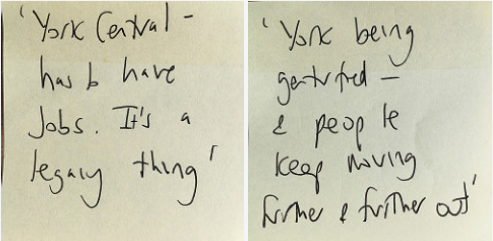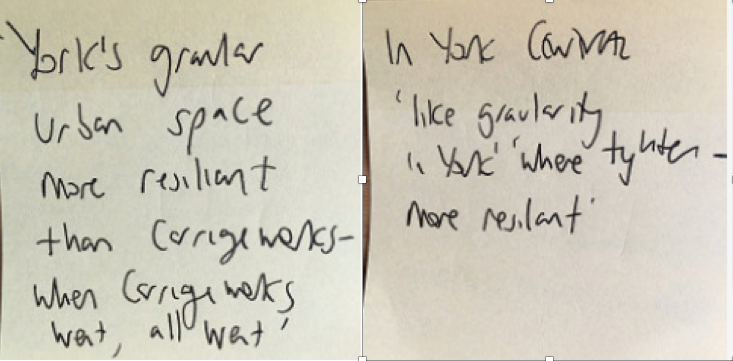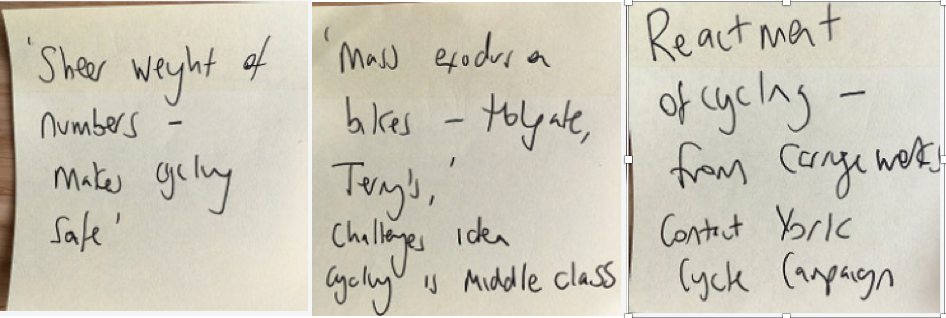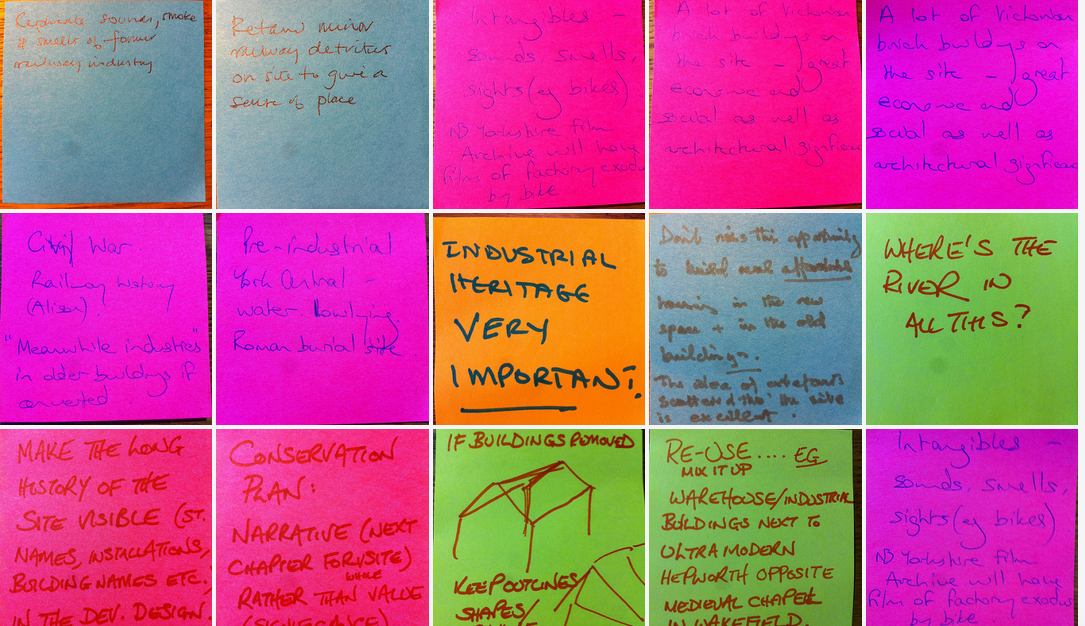When we started My Future York one of the first things we did was to ask people to imagine two Days in their Lives, one that year and the second in ten year’s time. Every one contributed was rich, memorable and gave very specific ‘briefing’ pointers for lots of different parts of the city, not least York Central. When we went visit York Travellers Trust (YTT) to discuss York Central, we mentioned this technique and Violet Cannon, Director of YTT said she’d give it a go. in 2028 there is a vision – as is included in the York Central Big Ideas – of sharing and exchange.
Violet Cannon, Director, York Travellers Trust
2018
I love York, I want to live here. Its one of the places my family call home. I say one! As a Romany Gypsy who lived roadside for most of my childhood, home was a lot of places within Yorkshire. Mainly it was split between Bradford, Harrogate and York. I settle for living in Selby and making the commute into my office in Falsgrave Crescent. I love my office. It’s not as majestic as some of York’s other buildings. But the old Girl stands proud in the middle of the other building around her.
I’m the Director of York Travellers Trust, the Trust is the longest running Gypsy Traveller Charity within the UK. (as far as my research as shown) and apparently the first Gypsy Traveller organisation to appoint a Gypsy or Traveller to the most senior paid role. I digress, but feel you need to know where I am. I am a Yorkshire lass, who happens to have been born Gypsy. Its my ethnicity not my lifestyle. York doesn’t have many options for me to live within its boundaries right now. I currently live just across the way, On a family development. York itself doesn’t seem to welcome private developments. Having only 3 sites and they are all Local Authority, and to be honest I don’t fancy paying nearly £100 a week for a slab of concrete and no rights as a tenant. The site residents are given licences not tenancies. I want a forever home. I’m thinking about getting married starting a family, somewhere kids can have safety and security. Yet still be connected to our rich heritage. I want a home I own or at least have some legal right to.
So, as I sit here in my little office space reviewing the York Local Plan and our objections, I dream of the day I can cycle back home, past York’s stunning architecture on a warm summers evening. Where 10 minutes is enough time for any journey. Suddenly I realise I have an appointment with the Housing Department and then at the York CVS I jump in my car to make the 1.5-mile journey to tanner row carpark. The meetings not for another 30 minutes, just hope I’ve allowed enough travel time!
2028
I wake up to the alarm, alerting me its time to ensure the children have their breakfast! They are already up. The kids from the house opposite my chalet are helping mine feed the horse, as the little girl brushes down the side of old Peggy, the little boy helps my Tom struggle with a bucket of water.
I pull on a robe and wander to the door way to tell them breakfast will be 20 minutes, I catch the old man from in the assisted living struggling by with some bags. My little Tom drops his side of the bucket and goes to help him. Tom is thanking him and coming back with the bags.
“Apples from the communal garden mam, he said you wanted some for an apple pie and we could have the rest for the horses!”
I wave to the old man and ask if he’s coming into The Shared Heritage centre later for the skills sharing café. He nods and waves.
I walk back in and get dressed, no rush for me. The kids school is just down the road, I don’t need battle with rush hour traffic. They go with the other neighbour’s kids on the walking bus, thankfully we are only go on the supervision rota once every 2 weeks. I do love to hear my kids having fun and talking to the Gorja Children. None of them see difference. Gypsy isn’t a negative in York Central. They think my kids are cool, they have a horse, their mam runs the heritage centre and their dad tells stories and plays music around the community camp fire! The neighbours loved when we had the Vardo and horse and took them all around the York Central green. I start making the breakfast as I think of my day ahead. I need to follow up on some emails and make sure we have lunch for the skills sharing, today one of the older Gypsy men is teaching how to make wooden pegs and one of the ladies is explaining how the new virtual pcs work! All very confusing to me, but she’s a retired I.T expert and apparently, they are like second nature once you get used to them! Give me the good old days of touch screen and siri!





